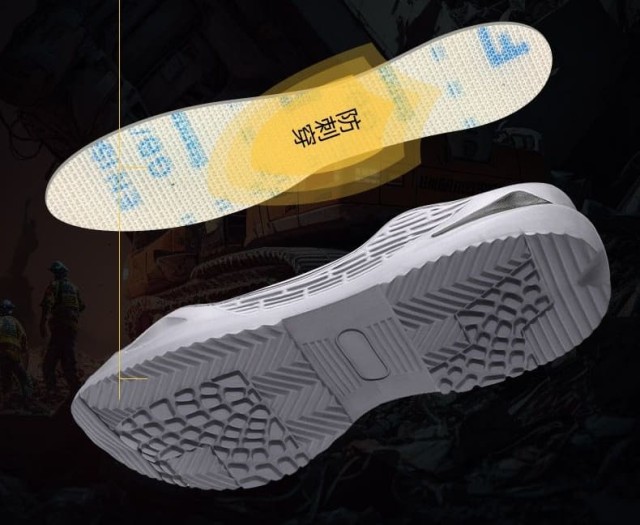Modern work boots are engineered to protect against occupational hazards while ensuring all-day comfort. By understanding how each component aligns with industry-specific risks, professionals can make informed choices that enhance workplace safety and productivity.
Anatomy of a Work Boot
Outsole: Traction and Hazard Protection
The outsole is the foundation of workplace safety. Its design determines slip resistance, chemical resilience, and durability:
- Traction patterns: Deep lugs prevent slips in wet/oily conditions (critical for oil/gas or food service).
- Material selection: Rubber excels in durability, while specialized compounds resist acids or extreme temperatures.
- Puncture plates: Found in construction boots, these prevent nails or sharp debris from penetrating the footbed.
Midsole: Shock Absorption for High-Impact Environments
Midsoles cushion impacts during prolonged standing or walking:
- Composite vs. steel toes: Composites reduce foot fatigue by 30% while offering equal crush protection (200J rating). They’re ideal for temperature extremes, as they don’t conduct heat/cold like steel.
- Shank support: Reinforced arches prevent fatigue in jobs requiring ladder climbing or uneven terrain navigation.
Upper: Material Durability Against Workplace Elements
The upper balances protection and breathability:
- Leather: Resists abrasions in construction but requires waterproofing.
- Synthetics: Lighter for healthcare workers; some incorporate antimicrobial linings.
- Metatarsal guards: Found in manufacturing boots, these shield the foot’s upper bones from falling objects.
Matching Boot Components to Your Job
Construction: Puncture-Resistant Midsoles and Reinforced Toes
- Key risks: Falling tools, sharp debris, uneven surfaces.
-
Optimal features:
- Steel/composite toes with metatarsal guards.
- Vibram® outsoles for muddy terrain grip.
- Waterproof full-grain leather uppers.
Oil and Gas: Chemical-Resistant Outsoles and Static Dissipation
- Key risks: Slippery surfaces, hydrocarbon exposure, electrical hazards.
-
Optimal features:
- Oil-resistant rubber outsoles with electrostatic dissipation (ESD) for explosion prevention.
- Non-metallic toes to avoid spark risks.
- Heat-resistant materials for refinery work.
Healthcare: Lightweight Insoles and Slip-Resistant Treads
- Key risks: Biohazards, long shifts on hard floors.
-
Optimal features:
- Slip-resistant microcellular PU outsoles for tile floors.
- Moisture-wicking insoles with arch support.
- Machine-washable uppers for hygiene.
Buyer’s Guide: Prioritizing Features for Safety and ROI
- Assess your top 3 hazards (e.g., electrical, chemical, impact).
- Compare materials: Composite toes for comfort, steel for heavy industrial use.
- Test flexibility: Bend the toe box to check for natural movement.
- Verify certifications: ASTM F2413 (impact/crush ratings) or EH (electrical hazard) standards.
Pro Tip: Rotate two pairs to extend boot lifespan by 50%.
Upgrade Your Safety Footwear Line with 3515
Distributors and bulk buyers: Partner with 3515 to source boots engineered for occupational risks—from chemical-resistant soles to fatigue-reducing midsoles. Our manufacturing expertise ensures compliant, high-ROI footwear tailored to your clients’ industries. [Contact our team] to discuss custom solutions.
Related Products
- Wholesale Durable Safety Boots | Custom Steel Toe & Puncture-Resistant Manufacturing
- Custom Wholesale Leather Safety Boots Direct Factory Manufacturing
- Wholesale Slip-On Safety Boots Manufacturer - Custom Puncture-Proof & Steel Toe
- Durable Steel Toe Safety Boots Wholesale & Custom Manufacturing
- Customizable Anti-Smash Safety Boots for Wholesale & Private Label Manufacturing
Related Articles
- Matching Men’s Work Shoe Safety Technologies to Workplace Hazards
- How Safety Work Boots Engineer Protection: Features and Standards for Targeted Hazard Mitigation
- How Modern Steel Toe Boots Achieve Safety Without Sacrificing Comfort
- Steel Toe vs. Composite Toe Boots: How to Choose the Right Safety Footwear for Your Job
- How Safety Standards for Steel Toe Boots Protect Workers Beyond Impact Resistance



















